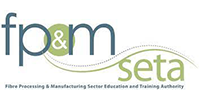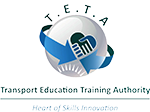Are you interested in taking up a career in professional firefighting? Have you just completed your Intermediate Fire Fighting Course (IFF) and want to study further? We at EMCARE are able to get you geared up and ready to complete your Fire Fighter 1 Skills Program (SP) course, helping you get to the next level of your firefighter training and education. Now that you are equipped with the necessary understanding to identify, contain, prevent, and extinguish different types of fires by using basic firefighting equipment, as well as have experience and training in operating firefighter equipment, you are ready to expand your firefighting knowledge and learn some real firefighting skills. Read further to learn more about what exactly the Fire Fighter 1 course is about and what you need to do to complete it.
What is the Fire Fighter 1 (SP) Course?
Before enrolling in a Fire Fighter 1 Course, you will be required to complete a Basic Fire Awareness Course (BFA), a Basic Fire Fight/ Fire Marshal Course (BFF), as well as an Intermediate Fire Fighting Course (IFF). Individually, each of these courses takes between half a day, to 2 days to complete, and will equip you with the necessary basic knowledge and skills around identifying fires and using firefighting equipment. Luckily, we at EMCARE offer all of these courses, as well as several other courses based on first aid, emergency evacuations, and health and safety.
By completing the basic firefighting courses mentioned above, you would have received training and the opportunity to practice your learned firefighting skills. You should now have a basic understanding of how to fight a fire, as well as how to prevent fires from occurring, and how to conduct a fire rescue. You are now ready to begin learning more skills and knowledge that are required for an entry-level firefighter career or volunteer, allowing you to perform your duties safely, effectively, and competently.
If you are interested in completing any of our firefighter courses, it should be known that you must meet the following prerequisites:
- No Claustrophobia
- No acrophobia
- Fitness declaration
- English read/write proficiency.
- Grade 10.
Over nine weeks, you will complete this career course which includes the Hazmat Awareness Skills Program (SP) training as part of the package, however, the Hazmat Awareness SP training can also be done separately upon special request. The Fire Fighter 1 course content will include the following:
- Orientation and Fire Service History
- Firefighter Safety and Health
- Fire Department Communications
- Building Construction
- Fire Behavior
- Firefighter Personal Protective Equipment
- Portable Fire Extinguishers
- Ropes, Webbing, and Knots
- Structural Search, Victim Removal, and Firefighter Survival
- Scene Lighting, Rescue Tools, Vehicle Extrication, and Technical Rescue
- Forcible Entry
- Ground Ladders
- Tactical Ventilation
- Water Supply
- Rescue
- Fire Hose
- Fire Streams
- Fire Control
- Loss Control
- Fire Origin and Cause Determination
- Fire and Life Safety Initiatives
- Relevant SA legislation
- NFPA 471, 472 and 473
- Introduction to hazardous materials
- Properties of hazardous materials
- Recognition and identification of hazardous materials
- Personal protective equipment
- Command, safety, and scene control
- Hazardous materials – containers and packaging
As with most safety courses and training, there are certain risks and challenges involved whihc learners should be aware of. Completing a Fire Fighter 1 Course is demanding both physically and mentally, so individuals should be mindful of the challenges listed below:
- Physical demands- trainees should be in good physical condition and be able to handle tasks such as liftin heavy equipment, climbing ladders, carrying hoses, and wearing heavy/ bulky protective gear.
- Exposure to heat and smoke- trainees may be exposed to smoke and extreme heat during their training exercises which can be physically exhausting.
- High-stress environments- firefighters work in high-stress, fast-paced environments and so trainees will learn to remain calm and make quick decisions under pressure.
- Confined spaces- sometimes firefighters have to enter into burning buildings or crawl through tight spaces to search for victims or extinguish fires, presenting a risk of entrapment or injury.
- Mental stress- the significant emotional and psychological challenges of firefighting affect everyone and so trainees will be taught how to cope with the stress of witnessing traumatic events and how to make effective life-or-death decisions.
- Communication challenges- effective communication is crucial when firefighting or responding to any emergency for that matter. Trainees will be taught to correctly use communication equipment in high-noise environments.
- At EMCARE, we train our learners at the highest possible quality, ensuring each individual is well aware of what a real-life firefighting scenario entail.
Fire Fighter 1 Course: Who Should Complete the Course?
Many people may assume at first glance that the fire fighter 1 course is only designed for individuals who dream of becoming firefighters this is actually a misconception. In fact, there are other groups of people who will also benefit from taking this course. A fire fighter 1 course provides students with the necessary knowledge and skills needed to participate safety in a fire-based emergency situation. For these reasons, the following groups should also look to complete a fire fighter 1 course.
- Aspiring Firefighters: Although this course is not only designed for aspiring firefighters, this is still a great place for those who wish to pursue this sort of career path to start. It will provide a great introductory knowledge basis. Professional fire fighters are expected to complete several firefighter and safety courses, but by completing a fire fighter course 1 through EMCARE they will have taken the first step towards their dreams.
- Volunteer Firefighters: There are still others, who may not want to become professional fire fighters and make it their full-time profession but are still passionate about helping out their wider community. One way that these people can volunteer their time is by becoming volunteer firefighters who provide support to the professionals in those times where the fire is to large to only be handled by a small team. Because volunteers may also need to be subjected to fire based emergencies it is a good idea for them to participate in a fire fighter 1 course, in order to give them the knowledge to provide effective support.
- Industrial or Institutional Fire Brigades: some organisations, such as factories, industrial facilities, or educational institutions, may have their own established fire brigade to respond immediately to any emergencies that may occur. Usually, these institutions or industries are involved with high levels of risk, such as chemical plants, refineries, or manufacturing facilities. Thus, they require their own specialised fire brigade which have the knowledge to put out these dangerous fires and respond to emergencies. These industrial or institutional fire brigades may receive customised training and have special knowledge of the facility�s layout.
- Wildland Firefighters: wildlife firefighters combat wildfires and prevent future fires from starting. Some of their duties include serving as a firefighter or an engine operator during prescribed burning, wildfire suppression, and serving as crew during fire break preparation. Wildlife firefighting involves methods of sustainable forestry, prescribing burns, maintaining defensible space, and suppressing active fire.
- Emergency Medical Responders: some emergency medical responders, such as Emergency Medical Technicians (EMTs) or paramedics, often have to work in scenarios that involve firefighting skills, such as extricating passengers from crashed vehicle accidents. Often these individuals are required to complete their Fire Fighter 1 course in order to work their job.
- Search and Rescue Personnel: search and rescue teams may require their members to complete a Fire Fighter 1 course as it provides valuable skills for safely extracting individuals from hazardous situations, such as individuals who are trapped under the rubble of a building that has collapsed.
- Specialised Teams: certain specialised teams, such as a hazardous materials response team or a technical rescue team, may be required to complete their Fire Fighter 1 training in order to join the team.
Depending on the region or country, not all of the individuals above may be required to complete their Fire Fighter 1 training course and so it is best for you to first check with your organisation before completing the training course.

Fire Fighter 1 Course: Hazmat Awareness Training Course
In EMCARE’s Fire Fighter 1 course, we also include the Hazmat Awareness Training skills program. This part of the course involves teaching firefighters and first responders a basic understanding of the importance of safety controls and procedures when working with dangerous goods. The Hazmat Awareness Training also explains the role expected of the firefighters when faced with an emergency that involves these dangerous materials.
Hazardous materials and chemical substances are exceptionally dangerous and should only be handled by a trained professional. It is required by South African law that firefighters are adequately trained and informed about the potential health risks involved when exposed to these materials. The Hazmat Awareness Training course teaches individuals the correct procedures for alerting emergency services, as well as identifying these hazardous materials early, preventing potential danger, injury, and even death. The learner will be able to appreciate the different systems used in the classification of hazardous materials as well as the importance of material handling data sheets. The course includes the following content:
- Safety and scene controls and procedures.
- Understanding relevant regulations from the Occupational Health and Safety Act No. 83, 1993.
- Responding to a hazmat emergency using a systematic approach.
- Hazardous materials – systems of classification
- Hazardous materials – types, physical states, physical effects
- The National Fire Protection Association 704 system
- United Nations Classification System
- Material handling data sheets
- SABS 0231- Transportation of dangerous goods – operational requirements
- Tremcards and placards
- Handling emergencies involving hazardous materials
- The effects of hazardous materials on the body
- Ways that hazardous materials enter the body
- Physical signs and symptoms of hazmat contamination
- Personal protective equipment
- First aid for victims
- Decontamination procedures
- Identifying Hazardous Chemical Substances and using the emergency response guidebook.

Fire Fighter 1 Course: About EMCARE
Founded in 1997, EMCARE is a specialised health and safety training company. We offer high-quality legal compliance training courses in emergency medical, firefighting, first aid, health and safety, and emergency evacuation training. To ensure that our services are readily available at a national level, we have training centers located in the major cities of South Africa listed below:
- Johannesburg, located in West Rand.
- Limpopo, located in eastern Polokwane.
- Durban, located in Morningside.
- Port Elizabeth, located in Walmer.
We also have a network of EMCARE Training Agents which service Cape Town, Bloemfontein, Rustenburg, Nelspruit, Hoedspruit, and Lephalale.
All the courses we present are fully accredited by local accreditation bodies that continuously monitor all standards. Our courses are accredited by the Department of Labour, Department of Mineral Resources, HWSETA, and LGSETA. We are also associated with various other local and international associations that set benchmarks in our industry.
To ensure we provide the highest standard of training possible, our training courses are presented by fully qualified Level 6 Intermediate Life Support Paramedics or higher qualifications with a minimum of 1000 hours of work experience in emergency services. All of our facilitators are registered assessors/moderators and hold the necessary facilitation qualifications to ensure high-quality training throughout our programs.
If you are interested in completing your Fire Fighter 1 course through EMCARE or have further questions, do not hesitate to contact us. We would love to help you become the hero that you are!















